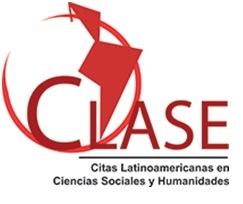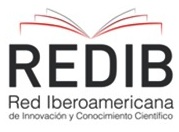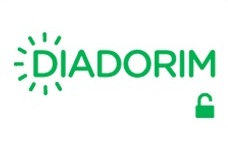Crise, desvalorização e reforma na moeda romana do terceiro século: uma breve consideração
DOI:
https://doi.org/10.11606/issn.2448-1750.revmae.2024.226386Palavras-chave:
Numismática romana, Inflação, Desvalorização, Reforma, Crise do terceiro séculoResumo
O artigo aborda introdutóriamente a questão econômica da Crise do Século Terceiro no Império Romano através da variação da desvalorização da moeda cunhada em prata, procurando recensear uma gradual pendência rumo à um papel mais intenso das cunhagens em bronze na estrutra da monetização romana. O avanço desta modalidade está intimamente ligado a Reforma Diocleciana, que é questionada em caráter duplo, como uma falha no controle inflacionário mas, ao mesmo tempo, como uma importante mudança na lógica de entendimento da moeda. Em seguida, se argumenta a coexistência de Modos Monetários diversos da moeda cunhada como elementos fundamentais para a promoção da monetização, caracterizando a Crise do Século Terceiro como um momento de interrupção destas estruturas. A grande inovação da Reforma Diocleciana seria, então, abarcar elementos antes originários dos Modos Monetários nas novas seriações em bronze.
Downloads
Referências
Andreau, J., 1997. Modernité économique et statut des manieurs d’argent. In : Andreau, J. Patrimoines, échanges et prêts d´argent: L´économie romaine. Roma, L’Erma di Bretschneider, 3-45.
Andreau, J. 1999. Banking and Business in the Roman World. Cambridge University Press, Cambridge.
Bagnall, R.S. 1985a. Agricultural Productivity and Taxation in Later Roman Egypt. Transactions of the American Philological Association, 115:,289-308. https://doi.org/10.2307/284204.
Bagnall, R.S. 1985b. Currency and inflation in fourth century Egypt. Scholars Press, Chico.
Bailey, D.R.S. 1970. Cicero’s Letters to Atticus. Cambridge University Press, Cambridge.
Banaji, J. 2007. Agrarian Change in Late Antiquity: Gold, Labour, and Aristocratic Dominance. Oxford University, Oxford.
Bruun, P. 1979. The Successive Monetary Reforms of Diocletian. Museum Notes of the American Numismatic Society, 24:,129-148. Disponível em: <https://www.jstor.org/stable/43573581>. Acesso em: 16/01/2025.
Burnett, A.; Craddock, P.T. 1983. Rome and Alexandria: the minting of egyptian tetradrachms under Severus Alexander. Museum Notes of the American Numismatic Society, 28:,109-118. Disponível em:<https://www.jstor.org/stable/43573664>. Acesso em: 16/01/2025.
Callu, J. 1959. Follis singularis: A propos d’une inscription de Ghirza Tripolitaine. Mélanges d’archéologie et d’histoire, 71: 321-337. Disponível em: <https://www.persee.fr/doc/mefr_0223-4874_1959_num_71_1_7453>. Acesso em: 16/01/2025.
Carrié, J-M. 1994. Dioclétien et la fiscalité. Antiquité Tardive, 2:,33-64. https://doi.org/10.1484/J.AT.2.301152.
Christol, M. 1977. Effort de guerre et ateliers monétaires de la périphérie au iii e siècle après J.-C.: Vatelier de Cologne sous Valerien et Gallien. In: Chastagnol, A.; Nicolet, C.; Effenterre, H.V. (Eds). Armées et fiscalité dans le monde antique: Paris 14-16 octobre 1976. Édirtions du Centre National de la Recherche Scientifique, Paris, 235-278.
De Callataÿ, F. 2017. Crises monétaires et crises du monnayage dans le monde gréco-romain : Une vue perspective. Topoi, 21: 173-192. Disponível em: <https://www.persee.fr/doc/topoi_1161-9473_2017_num_21_1_3129>. Acesso em: 17/01/2025.
De Ligt, L. 1990. Demand, supply, distribution : The Roman peasantry between town and countryside. Rural monetization and peasant demand. Münstersche Beiträge zur Antiken Handelgeschichte, 9: 24-56.
Drinkwater, J.F. 1987. The Gallic Empire: Separatism and Continuity in the North-western Provinces of the Roman Empire, A.D. 260-274. Coronet Books, Londres.
Ducan-Jones, R. 1994. Money and Government in the Roman Empire. Cambridge University Press, Nova York.
Elks, K.J.J. 1975. The eastern mints of Valerian and Gallienus: the evidence of two hoards from western Turkey. Numismatic Chronicle, 15: 91-109. Disponível em: <https://www.jstor.org/stable/42666506>. Acesso em: 17/01/2025.
Erim, K.T.; Reynolds, J. 1973. The Aphrodisias Copy of Diocletian’s Edict on Maximum Prices. The Journal of Roman Studies, 63: 99-110. https://doi.org/10.2307/299169.
Finley, M.I. 1999. The Ancient Economy. University of California Press, Berkeley.
Florenzano, M.B.B.; Ribeiro A.M.G.; Lo Monaco, V. 2015. A Coleção de Moedas Romanas da Universidade de São Paulo. Museu de Arqueologia e Etnologia da Universidade de São Paulo, São Paulo.
Friedman, Milton, “Money and Inflation”, 1978, Milton Friedman speaks. Lecture 6, Money and inflation. Idea Channel. (Gravação de vídeo) Disponível em: <https://www.youtube.com/watch?v=B_nGEj8wIP0>. Acesso em: 17/01/2025.
Harl, K.W. 1996. Coinage in the Roman Economy: 300 B.C. To A.D. 700. Johns Hopkins University Press, Baltimore.
Harris, W.V. (Ed.). 2008. The monetary systems of the Greeks and Romans, Oxford University Press, Oxford.
Harris, W.V. 2019. Credit-Money in the Roman Economy. Klio, 101: 158-189. https://doi.org/10.1515/klio-2019-0006
Hendy, M.F. 1985. Studies in the Byzantine Monetary Economy: C. 300-1450. Cambridge University Press, Cambridge. https://doi.org/10.1017/CBO9780511896750.
Hindess, B. 2007. The Battle of the Ancient Economy. Economy and Society, 36/3: 497-509. https://doi.org/10.1080/03085140701428423.
Hollander, D.B. 2005. Veterans, agriculture and monetization in the late Roman Republic. In: AUBERT, J., VÁRHELYI Z, S. (Ed.), A tall order. Writing the social history of the ancient world. De Gruyter, Leipzig, , 229-239.
Howgego, C.J. 1985. Greek Imperial Countermarks: Studies in the Provincial Coinage of the Roman Empire. Royal Numismatic Society, Londres.
Jongman, W. 2000. A golden age: Death, money supply and social succession in the Roman Empire. In: Lo Cascio, E. (Ed.). Credito e moneta nel mondo romano (Incontri capresi di storia della economia antica. Edipuglia, Capri, 181-196.
King, C.E. 1980. The sacrae largitiones, revenues, expenditure and the production of coin. In: King, C.E. (Ed.). Imperial Revenue, Expenditure and Monetary Policy in the fourth century A.D.: The Fifth Oxford Symposium on Coinage and Monetary History. British Archaeological Reports, Oxford, 141–173.
King, C.E. 1981. The circulation of coin in the western provinces AD 260–295. In: King, A.; Henig, M.. (Eds). The Roman West in the Third Century: Contributions from Archaeology and History.. British Archaeological Reports, Oxford, 89-126.
Laiou, A.E. 2002, « The Byzantine Economy : An Overview », dans A. laiou (éd.), The Economic History of Byzantium. From the Seventh through the Fifteenth Century, 3vol., Washington, p. 1145-1164.
Lendon, J.E. 1990. The Face on the Coins and Inflation in Roman Egypt. Klio, 72: 106-134. https://doi.org/10.1524/klio.1990.72.72.106.
Lerouxel, F. 2008. La banque privée romaine et le marché du credit dans les tablettes de Murécine et les papyrus d‟Égypte romaine. In : Verboven, K.; Vandorpe, K.; Chankowski, V. (Eds.). Pistoi dia tèn technèn: Bankers, loans and archives in the ancient world. Peeters, Leuven, 169-197.
Liebeschuetz, W. 2007. Was there a crisis of the third century? In: Hekster, O.; Kleijn, G. De; Slootjes, D. (Eds.). Crises and the Roman Empire: Proceedings of the Seventh Workshop of the International Network Impact of Empire (Nijmegen, June 20-24, 2006). Brill, Leiden, 11-20.
Lo Cascio, E. 1996. How did the Romans view their coinage and its function? In: King, C.E.; Wigg, D.G. (Eds.). Coin finds and coin use in the Roman world: The Thirteenth Oxford Symposium of Coinage and Monetary History, 25-27 March 1993. Gebr. Mann Verlag, Berlim, 273-287.
Lo Cascio, E. (Org.). 2000. Credito e moneta nel mondo romano: Atti degli Incontri capresi di storia dell‟economia antica. Edpuglia, Capri.
Minaud, G. 2005. La comptabilité à Rome. EPFL Press, Lausanne.
Nicols, J. 2007. Mapping the Crisis of the Third Century. In: Hekster, O.; Kleijn, G. De; Slootjes, D. (Eds.). Crises and the Roman Empire: Proceedings of the Seventh Workshop of the International Network Impact of Empire, Nijmegen, June 20-24, 2006. Brill, Leiden, 431–437.
Perrings, C. 1985. The Natural Economy Revisited. Economic Development and Cultural Change, 33/4: 829–850. Disponível em: <https://www.jstor.org/stable/1153876>. Acesso em: 22/01/2025.
Posner, H. 2015. The Value of Money: Coinage and Dioclecian’s Price Edict, in Journal of the Numismatic Association of Australia, 26: 1-18. Disponível em: <https://www.academia.edu/22375815/Journal_of_the_Numismatic_Association_of_Australia_Vol_26_2015_>. Acesso em: 17/01/2025.
Rathbone, D. 1991. Economic rationalism and rural society in 3d century A.D. Egypt. Cambridge University Press, Cambridge.
Rathbone, D. 1996. Monetization, not price-inflation in third-century A.D. Egypt. In: C.E. king et D.G. wigg (éd.), Coin finds and coin use in the Roman world: The Thirteenth Oxford Symposium of Coinage and Monetary History, 25-27 March 1993. Gebr. Mann Verlag, Berlin, p. 321-339.
Silva, U.G. da. A historiografia do Império Romano tardio: do Estado máximo ao Estado mínimo, e de volta outra vez. Revista de História, 176: 1–28, 2017. https://doi.org/10.11606/issn.2316-9141.rh.2017.126047.
Speidel, M.A. 1996. Die römischen Schreibtafeln von Vindonissa. In: Speidel, M.A. Die römischen Schreibtafeln von Vindonissa: Lateinische Texte des militärischen Alltags und ihre geschichtliche Bedeutung. Brugg Gesellschaft Pro Vindonissa, Brugg.
Sperber, D. 1978. Roman Palestine 200-400. The Land: Crisis and Change in Agrarian Society as Reflected in Rabbinic Sources. Journal of Roman Studies, 70: 235-236. Disponível em: <https://encurtador.com.br/5HoVo>. Acesso em:20/01/2025.
Verboven, K. 2007. Good for business. The Roman army and the emergence of a ‘business class’ in the northwestern provinces of the Roman empire (1st century BCE–3rd century CE). In: De Blois L.; Lo Cascio, e. (Eds.). The Impact of the Roman Army (200 BC – AD 476): Economic, social, political, religious and cultural aspects. Brill, Leiden; Boston, 295-313.
Verboven, K. 2009. Currency, bullion and accounts: Monetary modes in the Roman world. Revue Belge de Numismatique, número 155: 91-121. Disponível em: <http://hdl.handle.net/1854/LU-953421>. Acesso em:20/01/2025.
Von Reden, S. 2007. Money in Ptolemaic Egypt: From the Macedonian conquest to the end of the third century BC. Cambridge University Press, Cambridge.
Walker, D.R. 1978. The Metrology of the Roman Silver Coinage vols 1-3.Oxford University press, Oxford.
Ziegler, R. 1977. Münzen Kilikiens als Zeugnis kaiserlicher Getreidespend. Jahrbuch für Numismatik 27: 29-67. Disponível em: <https://www.bngev.de/wp-content/uploads/2022/05/1977-Band-XXVII.pdf>. Acesso em:20/01/2025.
Publicado
Edição
Seção
Licença
Copyright (c) 2024 Marcos Atilio Vaczi Vanin

Este trabalho está licenciado sob uma licença Creative Commons Attribution-NonCommercial-NoDerivatives 4.0 International License.


















